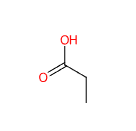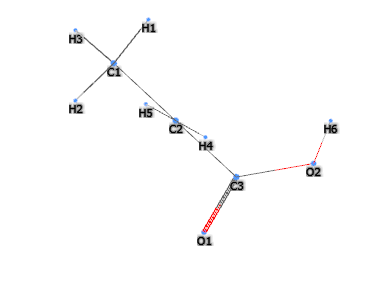Check the ingredients!
... live healthy!


| "Descrizione" by Whiz35 (11828 pt) | 2023-Apr-09 21:31 |
| Evaluation | N. Experts | Evaluation | N. Experts |
|---|---|---|---|
| 1 | 6 | ||
| 2 | 7 | ||
| 3 | 8 | ||
| 4 | 9 | ||
| 5 | 10 |
E280 (Propionic acid) is a chemical compound, a short-chain fatty, carboxylic organic acid, produced by the fermentation of lactose and other biological pathways using microorganisms, anaerobic bacteria, enteric bacteria, Propionibacterium and also by the fermentation of glycerol or synthesised by petrochemical processes.
It appears as a transparent liquid.

What it is used for and where
Nel corpo umano l'acido propionico ha funzione di mediatore tra fisiologia del cervello, nutrizione, microbiota intestinale.
Medical
The antimicrobial activity of propionic acid and its salts has long been known (1)
Food
Ingredient on the European food additives list as E280, preservative acidifier and artificial flavouring.
Animal feed
It is widely used in animal feed as an antimicrobial and anti-inflammatory agent and in the feeding of broiler chickens to prevent mould infection.
Safety
It is generally considered safe by the US Food and Drug Administration, however oral intake of propionic acid has an effect on glucose metabolism in humans leading to inappropriate activation of the insulin counterregulatory hormone network (2). In addition, propionic acid lowers fatty acid content in the liver and plasma, reduces food intake, exerts immunosuppressive actions and probably improves tissue insulin sensitivity (3).
Cosmetics
It is a restricted ingredient V/2 as Relevant item in the Annexes of the European Cosmetics Regulation 1223/2009. Maximum concentration in the ready-for-use preparation 2%.
Antimicrobial agent. This ingredient is able to suppress or inhibit the growth and replication of a broad spectrum of microorganisms such as bacteria, fungi and viruses by making the stratum corneum temporarily bactericidal and fungicidal.
Fragrance. It plays a decisive and important role in the formulation of cosmetic products as it provides the possibility of enhancing, masking or adding fragrance to the final product, increasing its marketability. The consumer always expects to find a pleasant or distinctive scent in a cosmetic product.
Preservative. Any product containing organic, inorganic compounds, water, needs to be preserved from microbial contamination. Preservatives act against the development of harmful microorganisms and against oxidation of the product.
pH adjuster. This ingredient tends to restore the pH of a cosmetic formulation to its optimal value. The correct pH value is an essential determinant for lipid synthesis in the stratum corneum. The average physiological pH value of the face ranges between 5.67 and 5.76. The hair fibre has a pH value of 3.67.
Other uses
The most relevant studies on this ingredient have been selected with a summary of their contents:
 |  |
Synonyms:
References_____________________________________________________________________
(1) Lück, E., Jager, M., Lück, E., & Jager, M. (1997). Propionic acid. Antimicrobial Food Additives: Characteristics· Uses· Effects, 145-151.
(2) Adler GK, Hornik ES, Murray G, Bhandari S, Yadav Y, Heydarpour M, Basu R, Garg R, Tirosh A. Acute effects of the food preservative propionic acid on glucose metabolism in humans. BMJ Open Diabetes Res Care. 2021 Jul;9(1):e002336. doi: 10.1136/bmjdrc-2021-002336.
(3) Al-Lahham SH, Peppelenbosch MP, Roelofsen H, Vonk RJ, Venema K. Biological effects of propionic acid in humans; metabolism, potential applications and underlying mechanisms. Biochim Biophys Acta. 2010 Nov;1801(11):1175-83. doi: 10.1016/j.bbalip.2010.07.007.
| Evaluate |